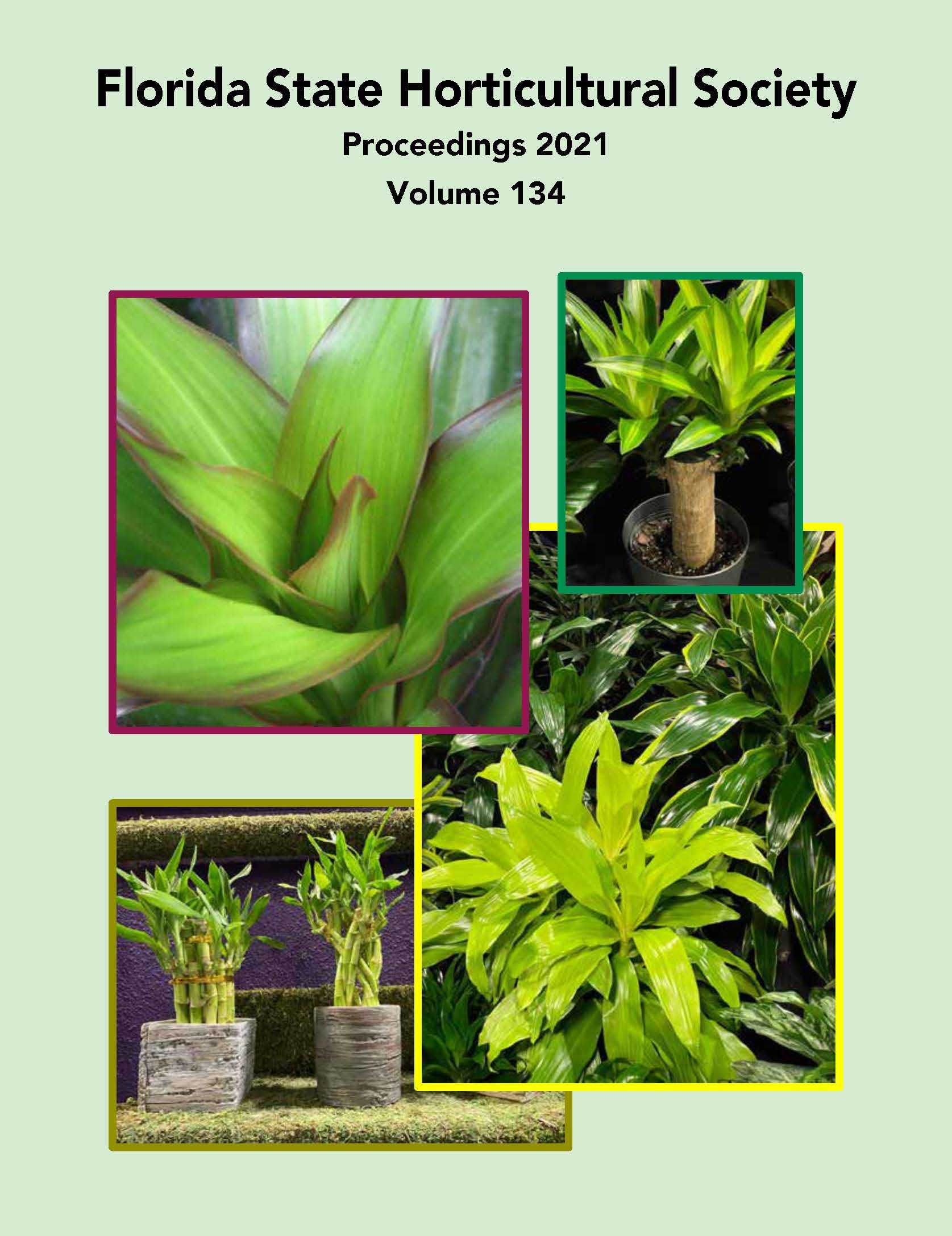Split Application of Essential Nutrients Enhances Tree Growth of HLB-affected Citrus Trees on Florida Sandy Soils
Abstract
Studies indicated that greater than 30% of the roots of huanglongbing (HLB)-affected citrus trees are damaged before canopy symptoms appear and that greater than 70% of root loss could be prevalent as citrus deprived of intensive cultural management to reduce abiotic and biotic stresses. The objective of this study was to determine whether split applications of essential nutrients reverse the deterioration of fine root length density (FRLD), tree canopy volume and leaf area index caused by HLB. Statistically significant leaf manganese (Mn) and zinc (Zn) concentrations were detected on the treated trees as compared to the control trees. The results indicated that soil-applied Mn had a positive effect in correcting the nutrient deficiency that might have occurred because of the seasonal crop removal. On the other hand, the inherent bioaccumulation and less mobility of Zn showed that foliar application of Zn could satisfy the annual requirement of Zn by the citrus trees. FRLD and leaf area index (LAI) were significantly affected by the highest micronutrient rate, a manifestation of possible Mn toxicity. These results indicate that citrus trees react positively to the split essential nutrient applications.

